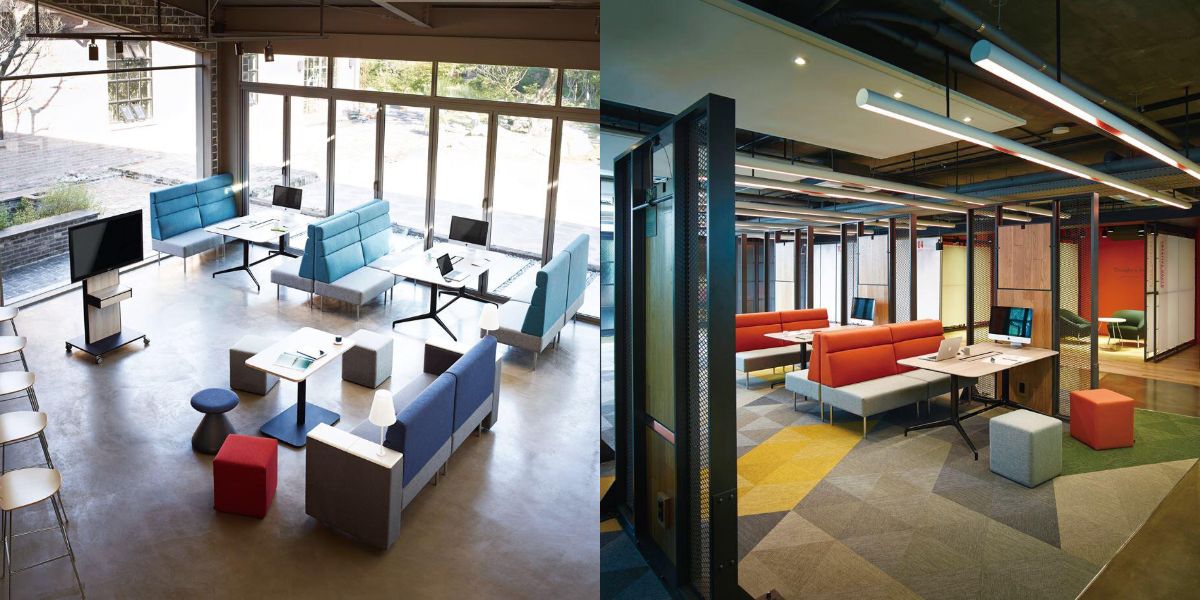With inputs from Mr.AshishAggarwal, Founder, Indo Innovations
The modern corporate office is eminent for open, co working spaces, in-house cafés and standing desks with space for two giant PC screens. Soon, there might be another must-have, the mask. However, the pandemic doesn’t stamp the end of the open floor office space.
As the world is steering through difficult stretches, our habits of living and working are being taken a second glance at. People have developed and the nature and way of working has likewise evolved throughout the long term, however this doesn’t require a short-term change in the plan of the workspace. Obviously, different changes in design are predicted sooner rather than later. The way in which one is working in the actual workplace will be modified. Right from the workplace scene to the social parts of the representatives – every feature will be relooked at. Prior to the lockdown, something that we as a whole considered unimaginable or superfluous turned into a reality short-term – a 100% ‘Work from Home’ culture.

Diverting, meddling, and now a potential health risk. The rundown of complaints against swarmed open office floor plans is mounting, and as it is suggested as the best way to safely reopen workplaces shuttered by the Covid. Operations and logistics for a similar should be worked out yet this is expected to be the new typical. Keeping an actual distance of 6 feet will be an important factor and will administer the plan of new and existing office spaces. It is a typical misguided judgment that lesser thickness will require lesser floor zone. Many offices are planning to open up; they will be incorporating a few changes for the wellbeing and safety of the employees. Since, a great deal of offices and sectors need face to face interaction and support to empower smooth operations; all employees will be available in the workplace yet at different timings. For instance, a specific set of employees may have their work timings from 7 am to 11 am and the following arrangement of individuals to report post that. Simultaneously, not all representatives might be required to answer to the workplace regular yet be accessible on a need premise, contingent upon the business of work. In such cases, the representatives will telecommute and answer to the workplace once or twice per week.
There will be critical changes in the design of the office furniture. In any event for the following one to two years, the design of the workspaces will see an incredible progress – taller allotments between workstations as seen in before office plans, work areas of bigger sizes and less inhabitancy, segments that go up when contrasted with the current standards of height, and so on will be a portion of the new components added to the current and forthcoming office spaces. This doesn’t imply that desk areas or workstations will be encased or opaque. Transparent, acrylic surfaces can be used to keep a direct visual association and a feeling of openness. The meaning of a meeting room will change totally. Individuals may not like to sit in an encased space with a huge group for quite a while.
This will prompt conversations and meetings occurring in open areas. Altogether of these situations, technology plays an incredibly, probably the most imperative job. Technology, as we probably are aware, has a critical task to carry out. Desktops, other gadgets/tools such as headsets and cameras may need to be provided at every desk. Somebody sitting in the workplace could interface outwardly and verbally with somebody telecommuting. We can’t see us going back to before the 90s with closed, progressive chambers and lodges, however our methodologies and spaces of work will change, with defensive and security gauges set up.

